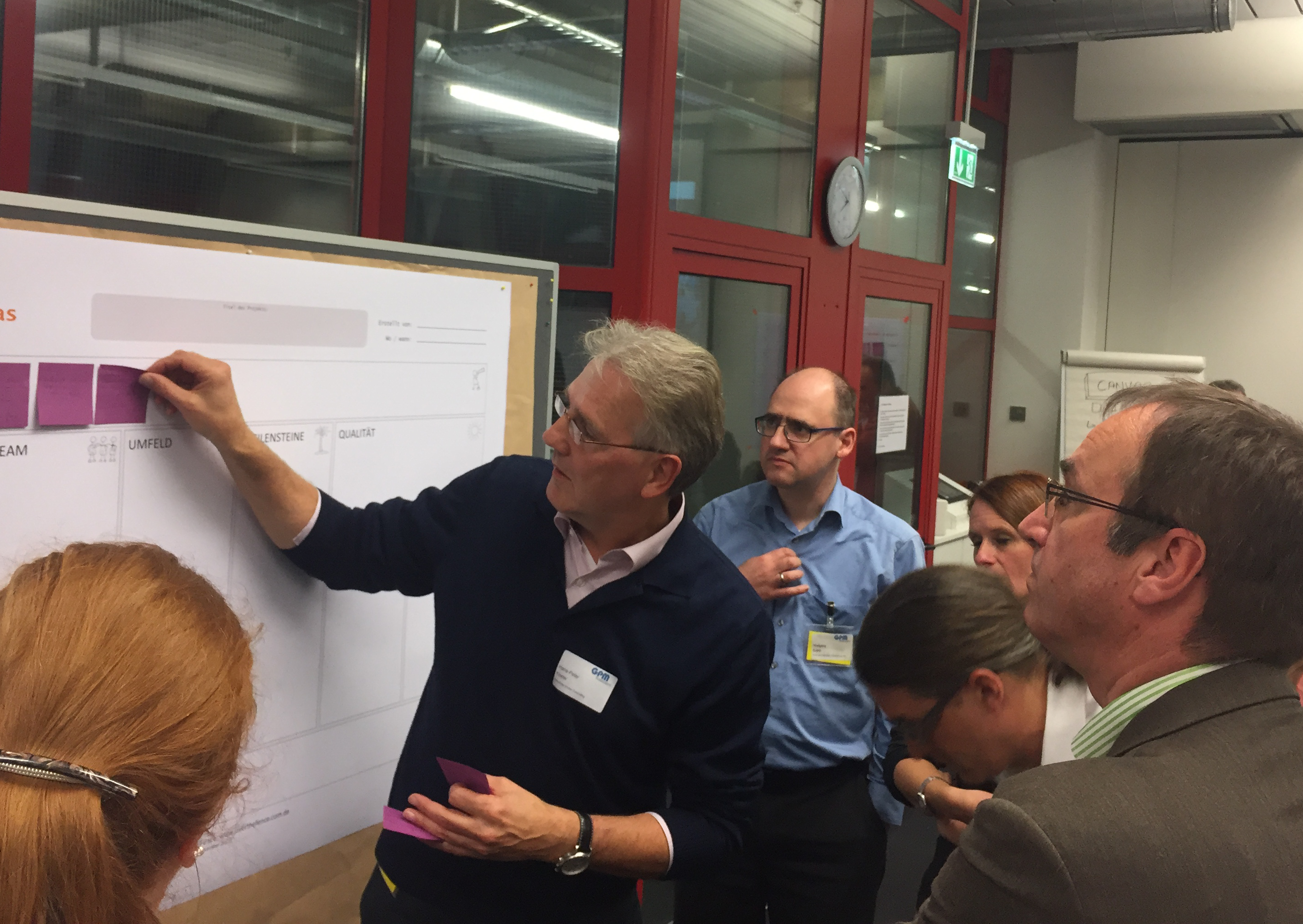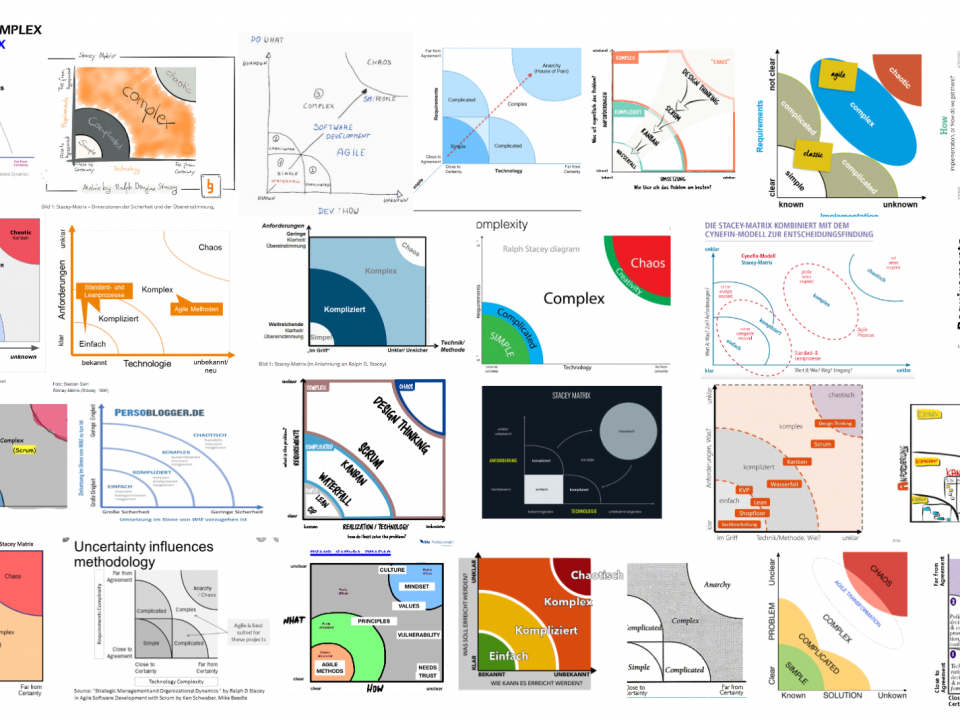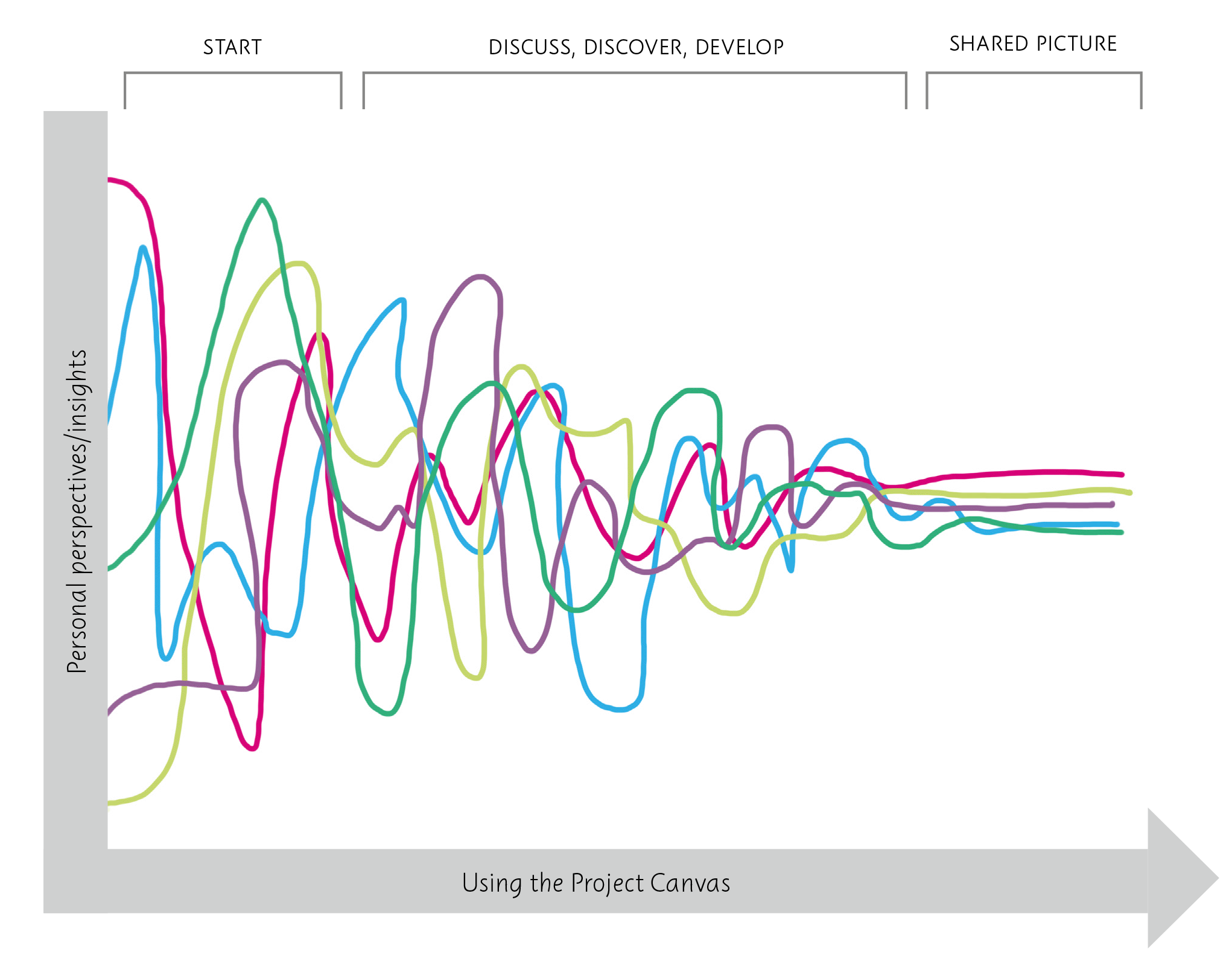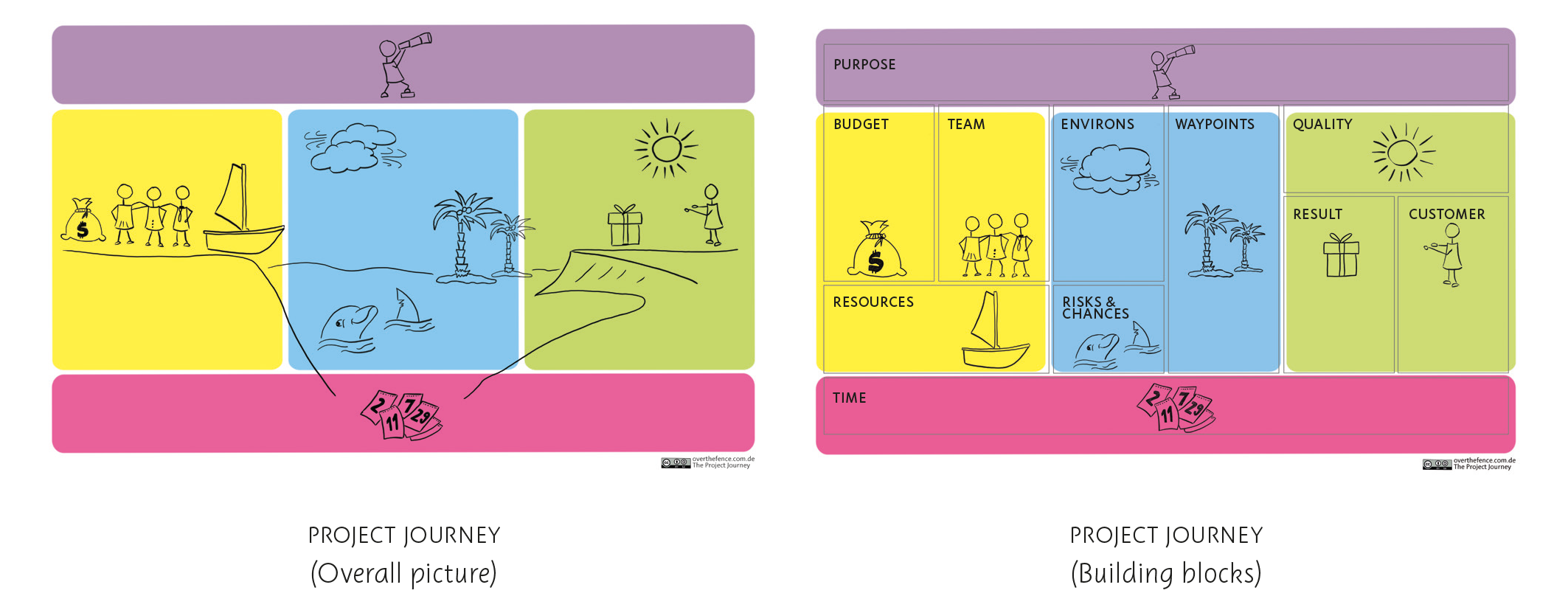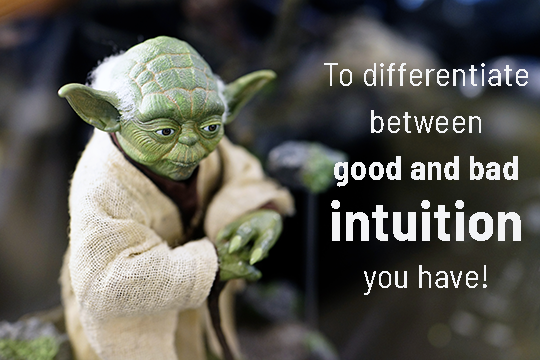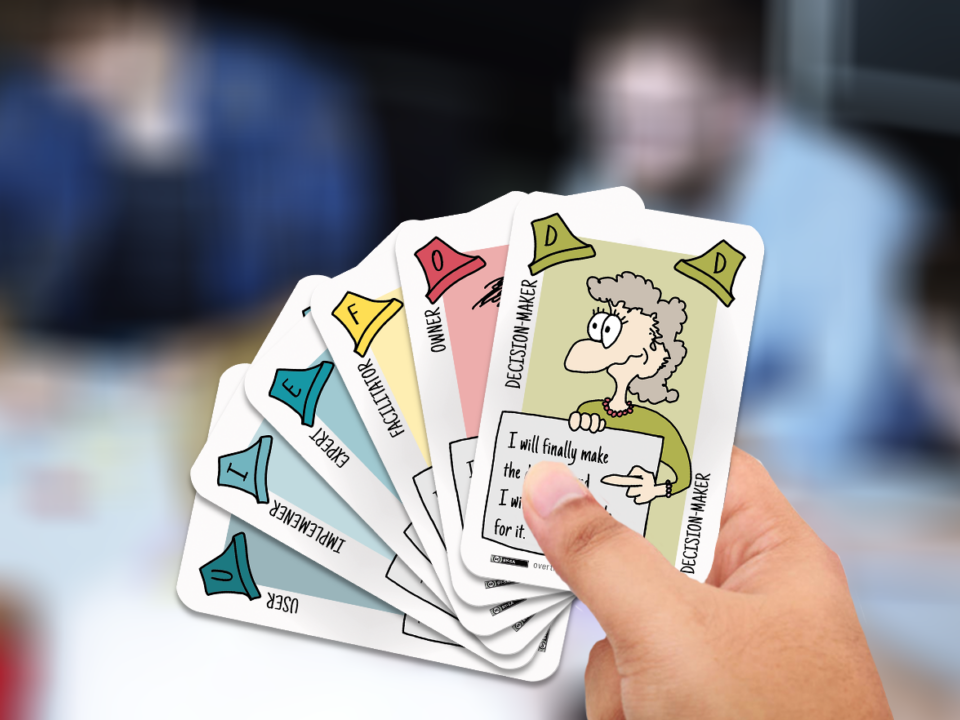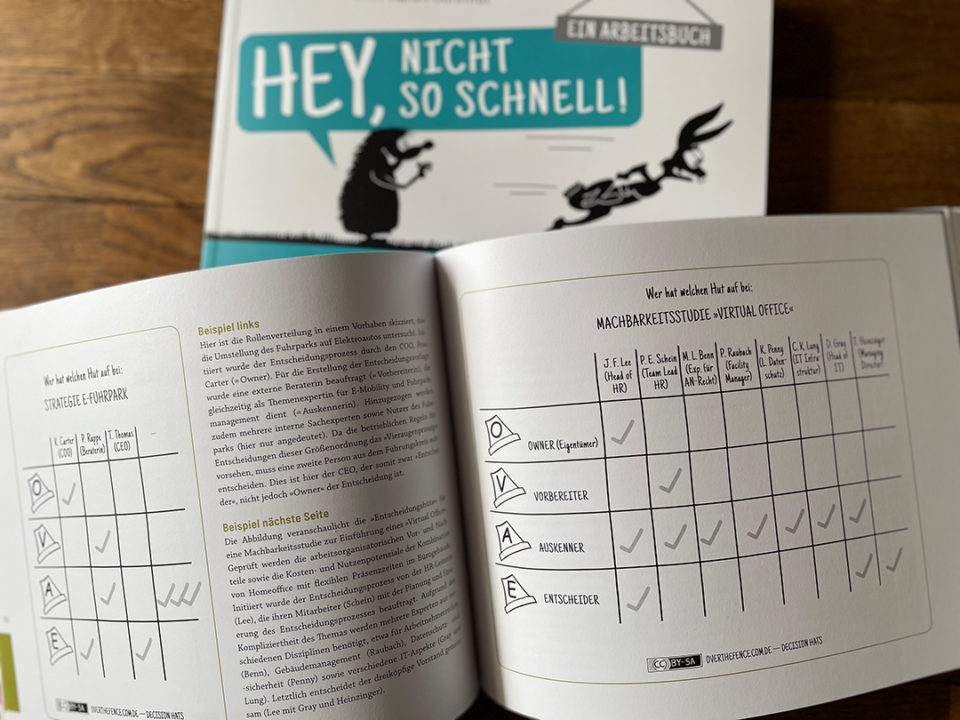Was ist der
Project Canvas?
Der Project Canvas geht auf die Idee des „Business Model Canvas“ von Alexander Osterwalder und Yves Pigneur zurück. Methodisch gesehen basiert jeder „Canvas“ (engl. Leinwand) auf zwei Ansätzen, die noch weiter zurückreichen: „Visual Templates“ und „Management Frameworks“. Bereits in der Mitte des vergangenen Jahrhunderts begannen Architekten und Designer, die Anforderungen ihrer Kunden auf vorbereiteten „Musterkarten“ und „Transparentpapier“ zu visualisieren. Seit den 1990er Jahren wurde das visuelle Begleiten von Prozessen („Visual Facilitation“) auch in Deutschland bekannt. Das Zerlegen eines komplexen Zusammenhangs in seine Bausteine und das Erfassen der entsprechenden Inhalte in eben solchen Containern haben grafische Mustervorlagen mit den Rahmenwerken des Managements gemein.
Nichts anderes tut ein „Project Canvas“: er zerlegt einen komplexen Zusammenhang – nämlich ein Projekt – in seine wesentlichen Bausteine. Doch erst durch die Verbindung des Rahmenwerks mit visueller Prozessbegleitung entsteht ein neuartiges Werkzeug.Der Project Canvas ist also ein visuelles Werkzeug für kundenorientiertes Projektdesign. Es veranschaulicht alle Themen, die vor einem anspruchsvollen Vorhaben durchdacht werden müssen. Das Instrument fördert den Dialog zwischen Projektkunden und Projektmachern. Es ist besonders hilfreich für interdisziplinäre Gruppen, die ein gemeinsames Verständnis eines anspruchsvollen Vorhabens erlangen wollen.
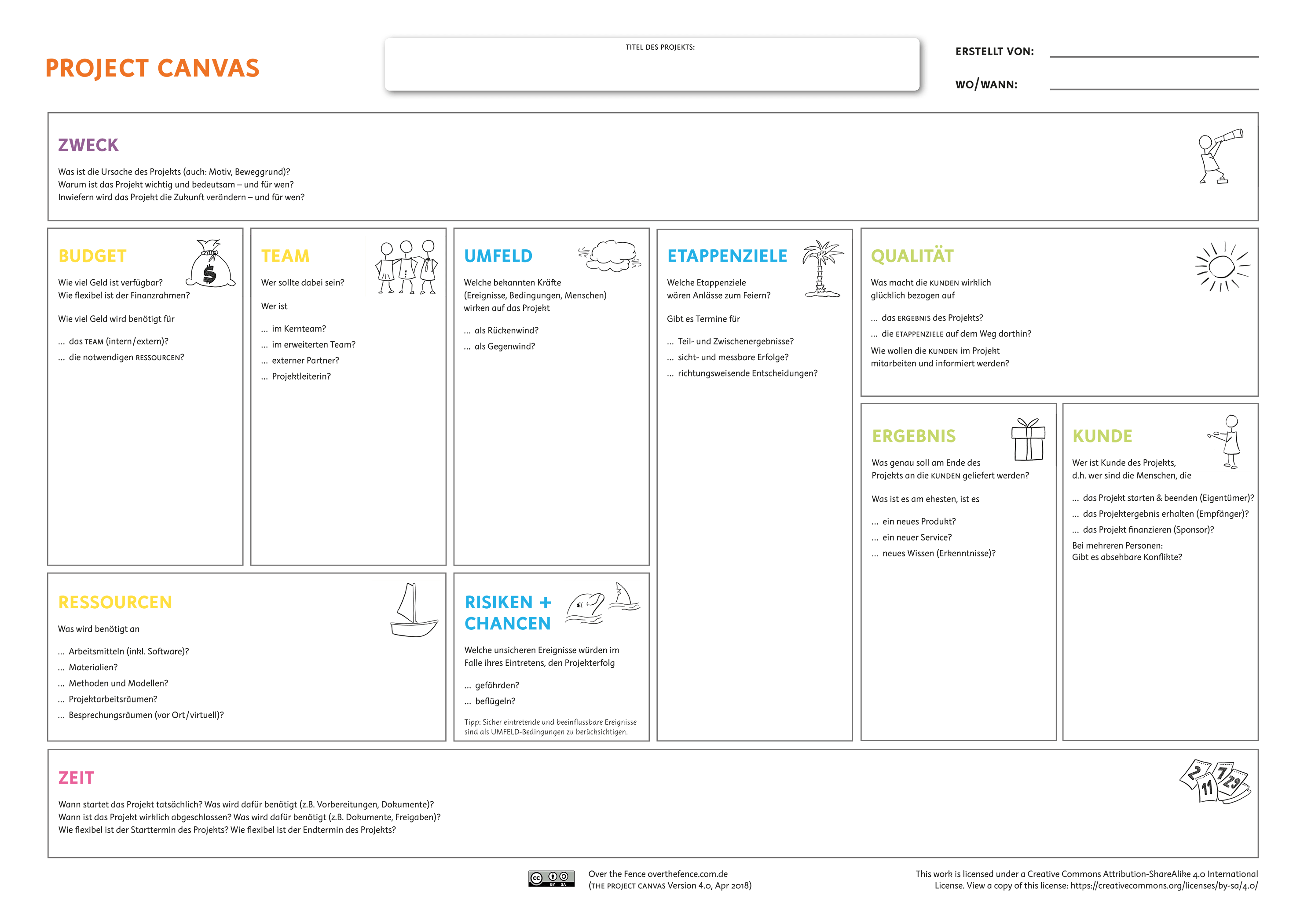
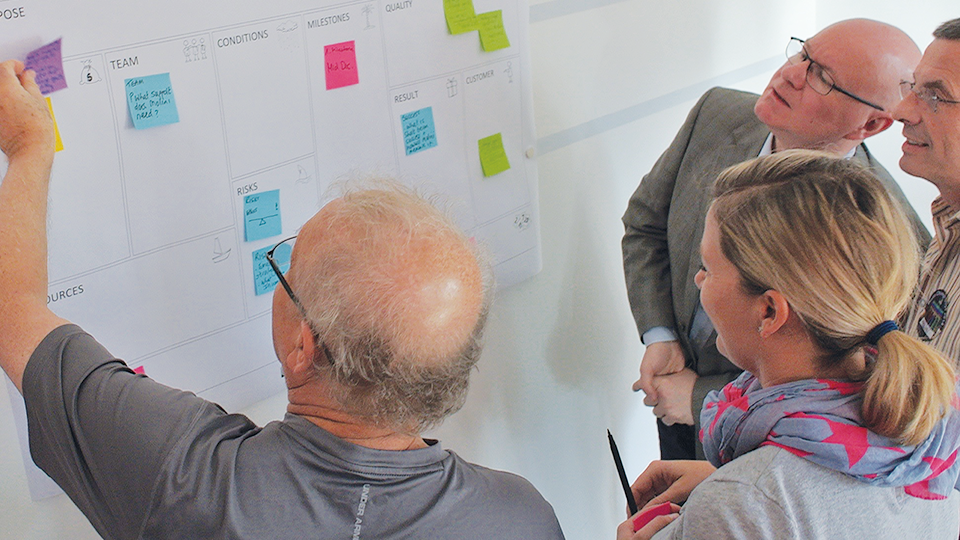
Wozu nutzt der Project Canvas?
Wenn Menschen uns fragen, „wozu nutzt eigentlich dieses Tool?“, lautet unsere Antwort, „er dient vor allem als Einladung zum Gespräch“. Und das stimmt. Mehr als alles andere, ist der Canvas ein Behelf, manche sagen gar „eine Ausrede“, um aus der täglichen Routine auszubrechen und bessere Gespräche zu führen. Dieses visuelle Tool erlaubt es, sich mit Kollegen, Kunden und Vorgesetzten anders zu unterhalten, als das üblicherweise der Fall ist, und er erlaubt es, Fragen zu stellen, die allzuoft ungefragt bleiben.
Doch der Project Canvas ist kein „Kochbuch“; er gibt keine strikte Instruktion. Vielmehr ist er nur schwach strukturiert und bietet jedem Team genügend Raum, seinen eigenen Weg zu finden. Dies ist eine Zutat der „Magie“ des Canvas: wenn Menschen die "Leinwand" anwenden, dann erfragen, entdecken und entwickeln sie und gelangen dadurch zu einem gemeinsamen Verständnis über ihr anstehendes Vorhaben.
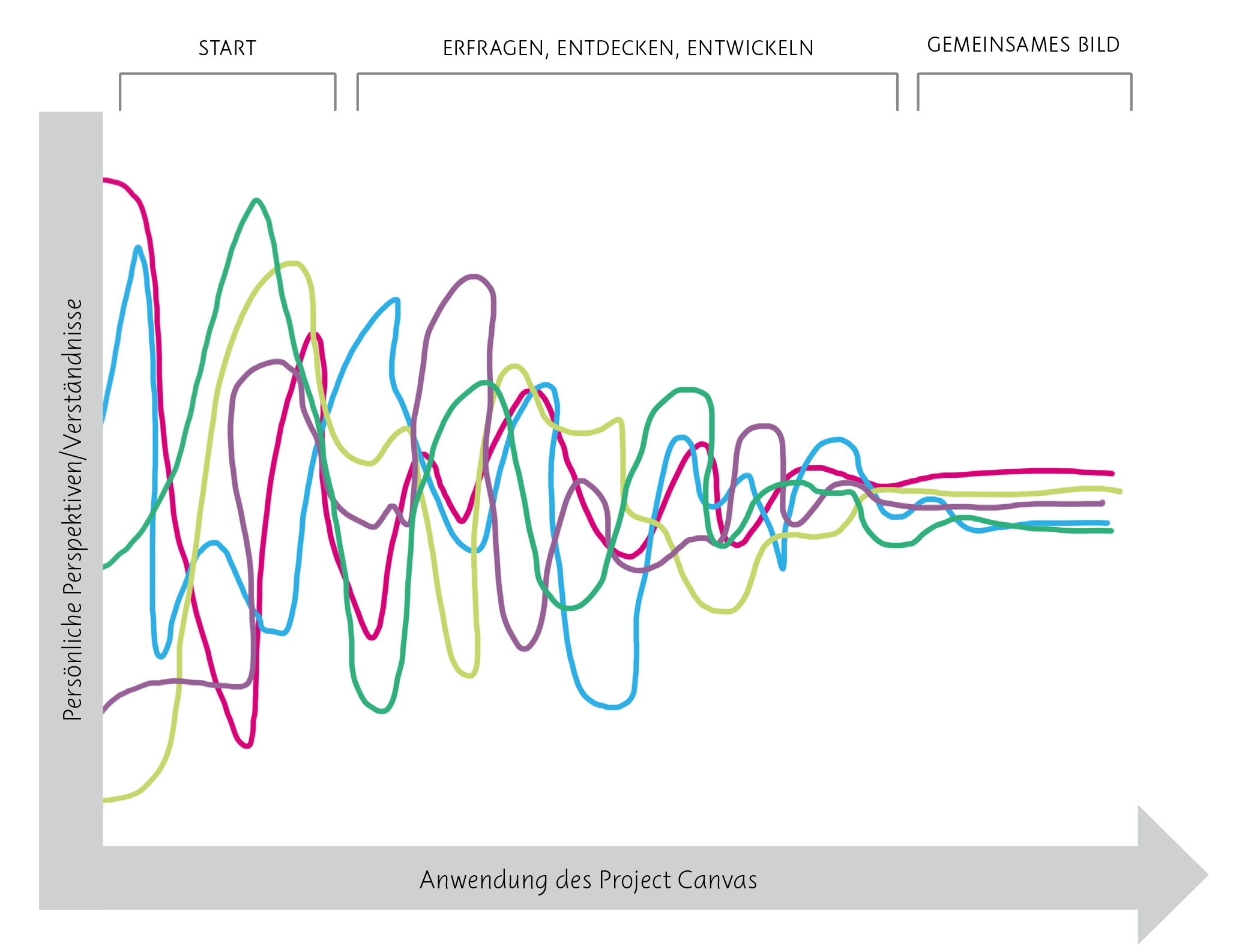
Eigenschaften, die den Project Canvas wirklich nützlich machen
(1) VERBINDENDE METAPHER:
Um einen konstruktiven Meinungs- und Informationsaustausch in einer heterogenen Personengruppe zu fördern, muss der Canvas auf einem gemeinsamen, disziplinen- und erfahrungsübergreifendem Projektverständnis gründen. Der Project Canvas basiert deshalb auf der Metapher der „Projektreise“.
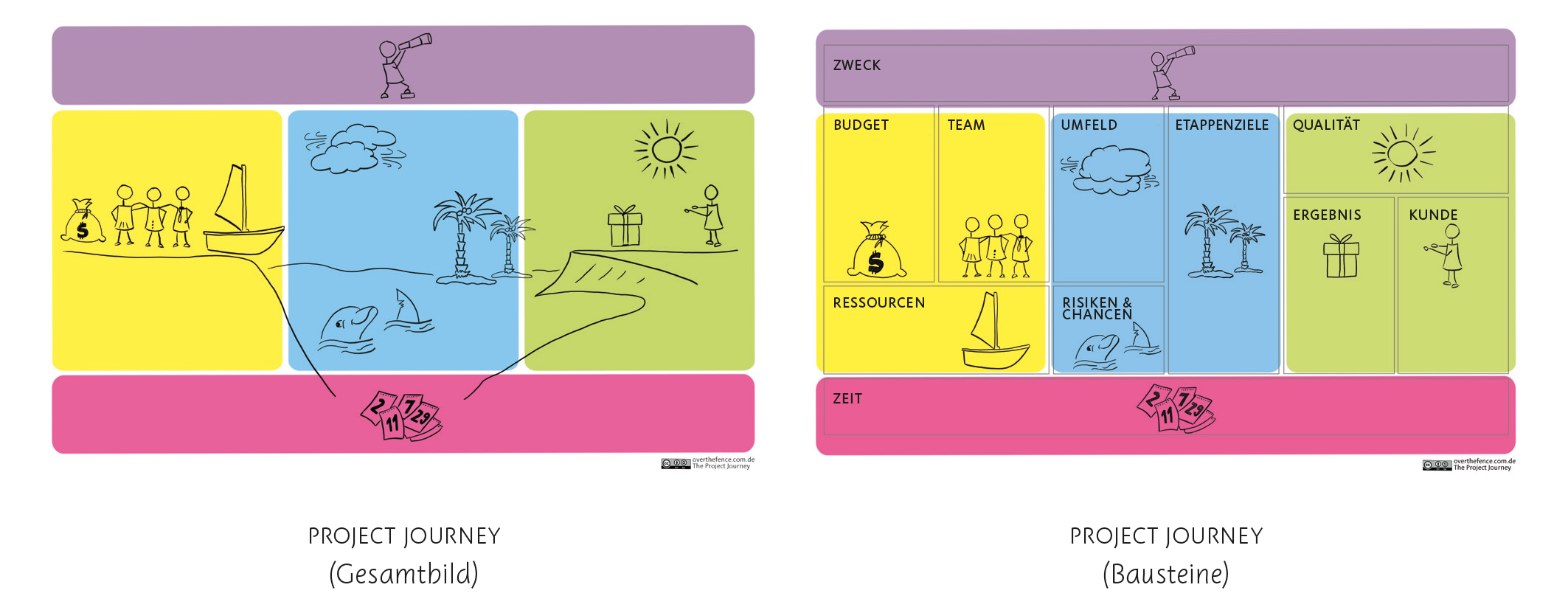
(2) EINFACHER AUFBAU:
Dieses visuelle Werkzeug ist so simpel wie möglich aufgebaut. Er umfasst nur das Allernötigste, nämlich die wichtigsten Bausteine eines Projekts und deren Hauptverbindungen.
(3) KRAFTVOLLE FRAGEN:
Offene Fragen helfen, den Dialog zwischen den Projektakteuren zu fördern. Die Fragen des Project Canvas wurden seit 2013 in hunderten von Projekten erprobt und weiterentwickelt. Getreu dem Motto „so viel wie nötig, so wenig wie möglich“ sind wir aktuell bei insgesamt 42 Fragen.
(4) NATÜRLICHE SPRACHE:
Um einen fach- und erfahrungsübergreifenden Dialog zu fördern, müssen die im Canvas verwendeten Begriffe und Formulierungen im besten Sinne „allen gemein sein“. Wir haben das mit hunderten von Menschen verschiedener Hintergründe getestet und „erklärungsbedürftige“ oder mehrdeutige Begriffe aussortiert.
(5) IM EINKLANG MIT STANDARDS:
Trotz seines einfachen Aufbaus und der natürlichen Sprache, ist der Project Canvas so gestaltet, dass er in Einklang mit den Standards des Projektmanagements steht. Die mit dem Project Canvas erzielten Ergebnisse können daher unmittelbar in weiterführende Projektdokumente wie Project Charter o.ä. übernommen werden.
(6) OFFENER ANSATZ:
Immer mehr Projekte werden agil durchgeführt oder in einer Kombination aus agilem und traditionellem Vorgehen. Der Canvas ist in Aufbau, Sprache und Struktur offen und mit allen Denkschulen des Projektmanagements kombinierbar. Er lässt sich in agilen Szenarien wie in phasenorientierten Vorgehensmodellen einsetzen.
(7) ERPROBTE GESPRÄCHSFORMATE:
Der Project Canvas ist eine Einladung zum Gespräch. Damit dieses Gespräch besonders fruchtbar abläuft, haben wir verschiedene Kommunikationsformate entwickelt und erprobt. Die Formate bewegen sich jenseits formularhaften Ausfüllens und sind für verschiedene Szenarien passend.
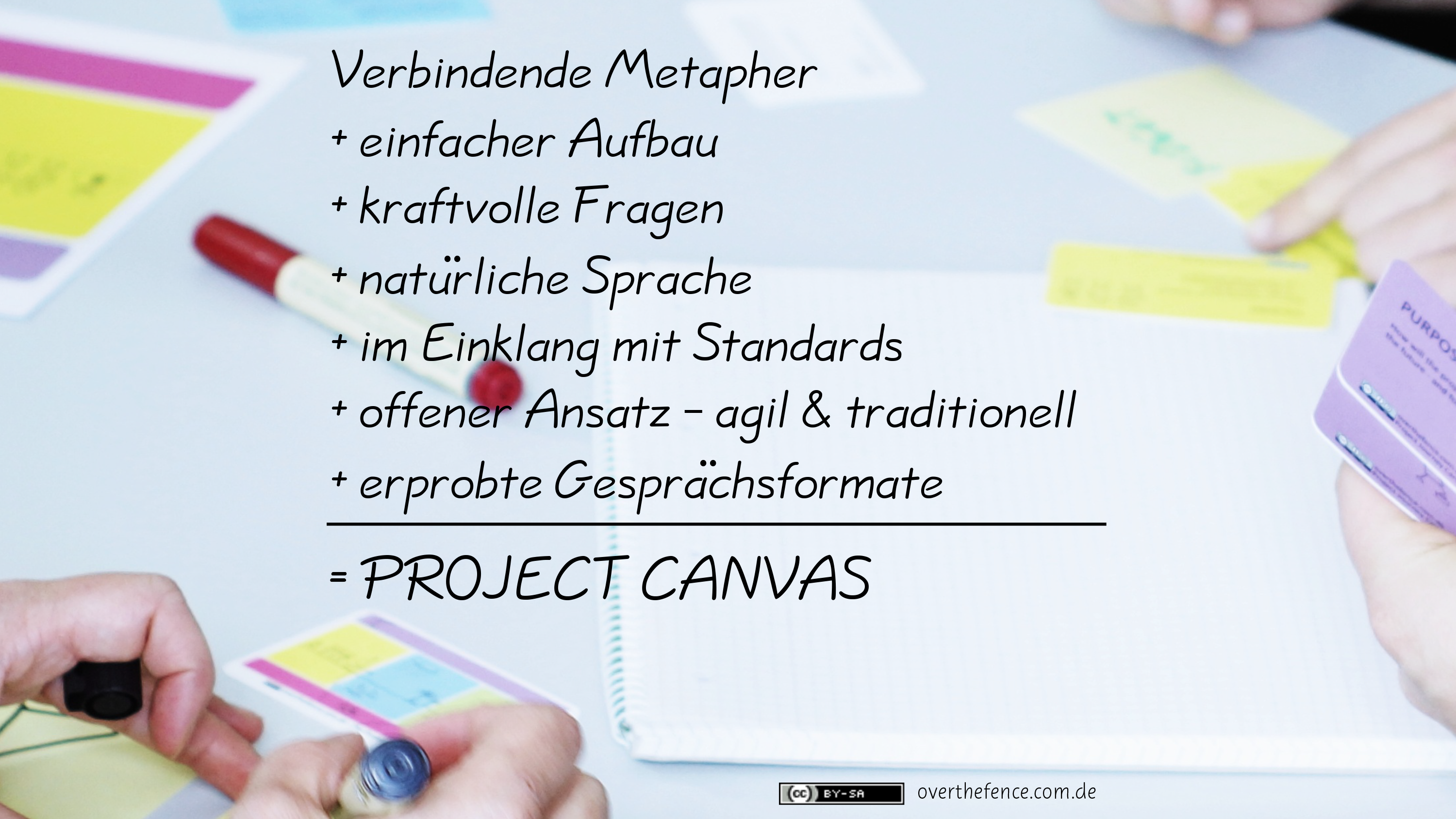
Falls Du noch mehr darüber lesen willst, findest Du die komplette Methodologie des Project Canvas in unserem Buch "Over the Fence".
Mittlerweile gibt es eine Vielzahl an „Project Canvases“
Wir heißen jedes Mitglied dieser Familie willkommen, denn - gleich wie aufgebaut und strukturiert - jeder Canvas bietet die Chance, Projekte gemeinsam besser zu machen.
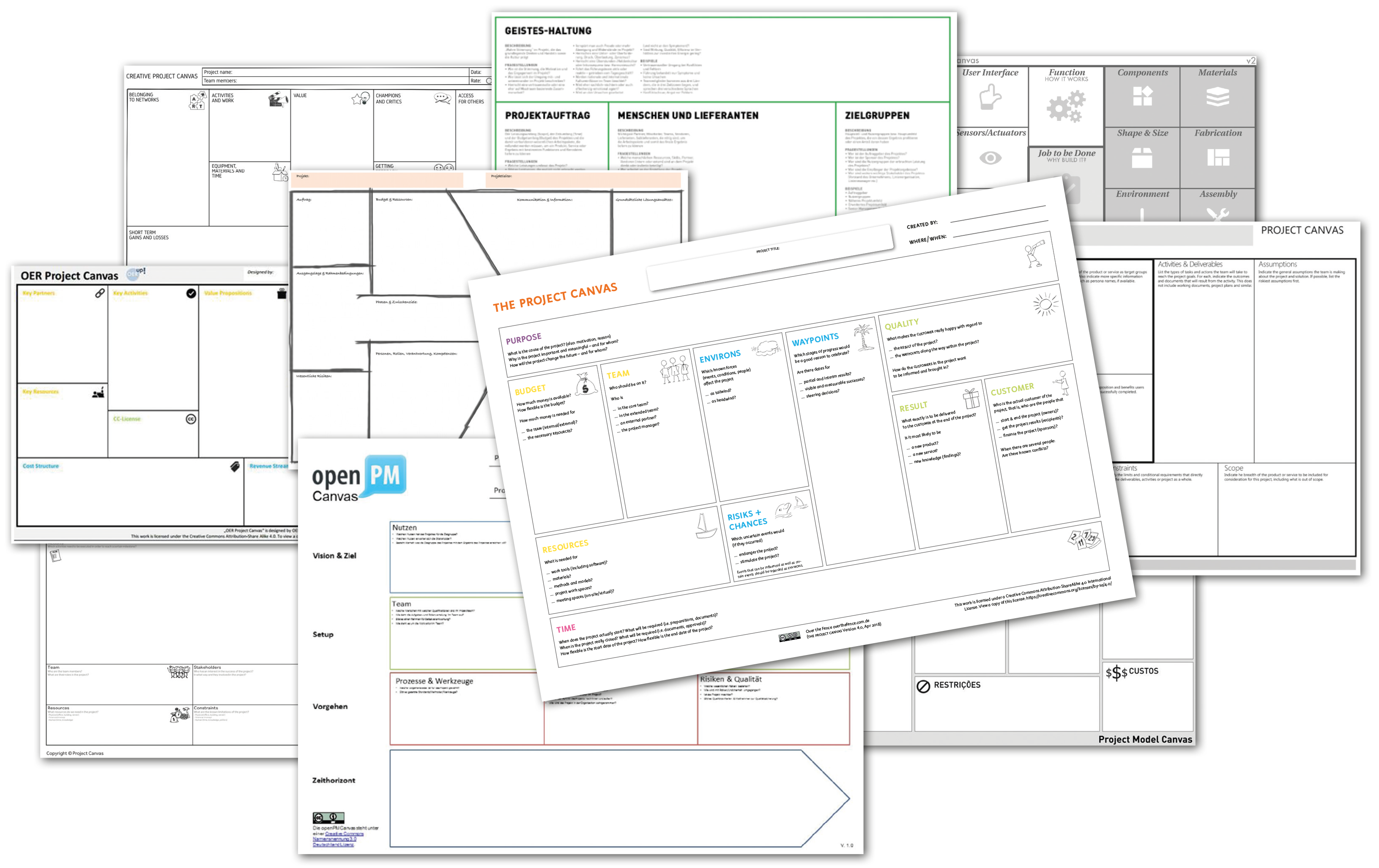
Quellen:
creativeprojectcanvas.com, kudoos.com.br, jvs.me, oerup.eu, openpm.info, overthefence.com.de, projectcanvas.dk, projektmensch.com, thetoolkitproject.com, turnaround.com
Weitere Artikel zum Thema:
- Der Project Canvas – wirksames Werkzeug zur Projektdefinition (Projektmagazin)- Project Canvas - defining projects in a structured way (IPMA)
- Project Canvas (Wikipedia)
Wir bieten Seminare zum Project Canvas
- Mehr dazu in unserem Seminar-Flyer.
- Aktuelle offene Events s. Veranstaltungsankündigungen

